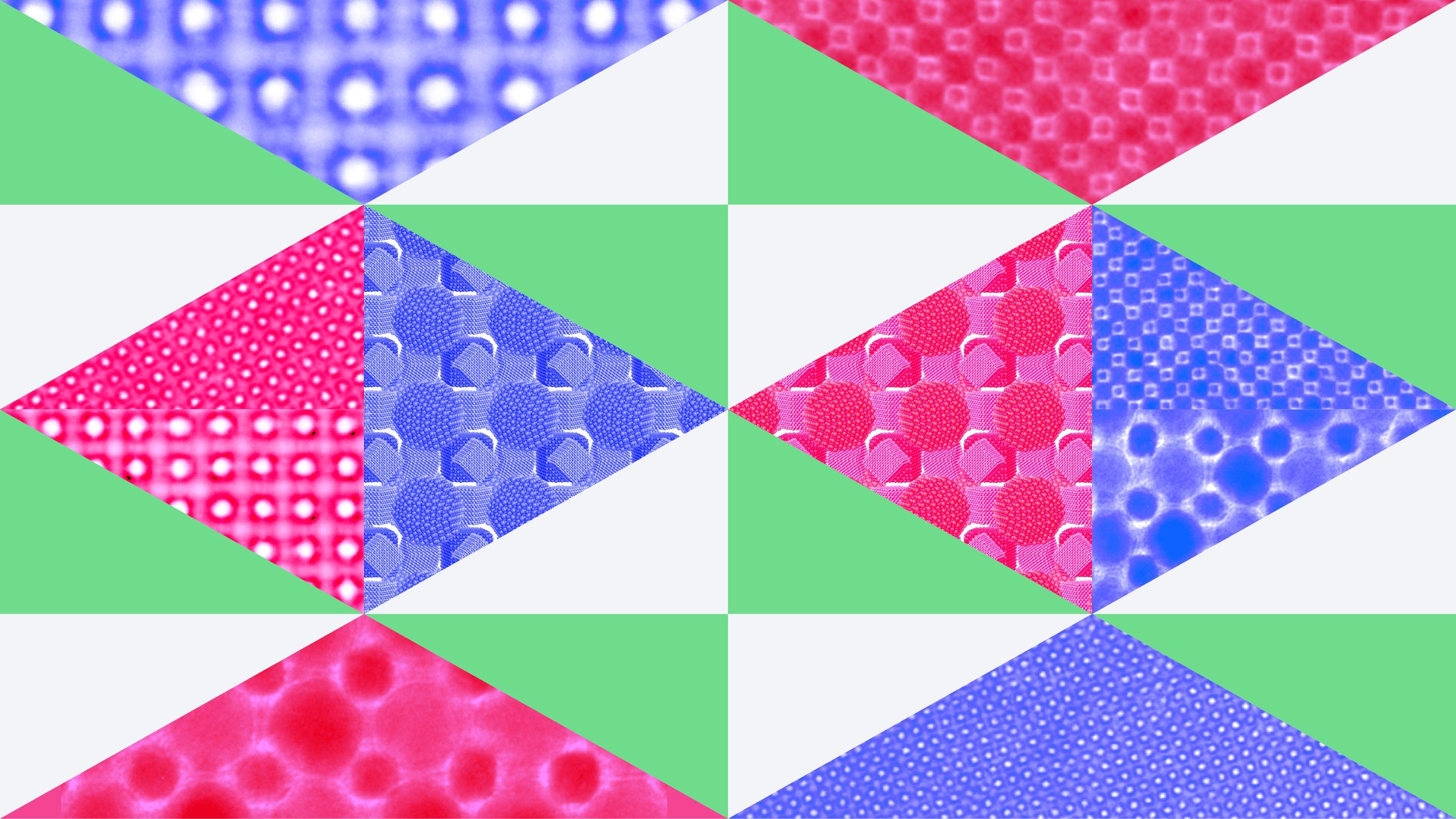Supercrystals: a step towards next-gen ultrabright light sources
They don't leap tall buildings or move faster than a sports car.
But supercrystals are just as awesome as having a superpower. They are like crystals on steroids. While a crystal emits light when excited by a laser, a supercrystal shoots out a burst so ultrabright that its not-so-super cousin’s light fades in comparison.
Another difference is that supercrystals are artificial — but tricky to make. In our latest paper featured on the cover of Nature,1 our team of researchers from IBM, Empa-Swiss Federal Laboratories for Materials Science and Technology, ETH Zurich, the Paul Scherrer Institute, Graz University of Technology, and Iowa State University describes a new way to make and study a whole suite of these mind-boggling materials.
Supercrystals should help us better understand weird quantum effects of light and matter interacting at microscopic scales. We could also use them to create ultrabright light-emitting diodes (LEDs) and components for a new generation of optical quantum computing devices.
Let’s dig in.
Supercrystals are metamaterials, first created in the late 1960s. With continuous progress in chemistry research, their quality has been improving and their use — getting ever-more widespread. They are “mesoscopic” objects, of a size half-way between the microscopic world of single atoms and the macroscopic scale of everyday experience.
In nature, crystals are born when atoms get arranged in space in such a way that they form geometric patterns from which solid materials draw many of their properties. To create supercrystals, scientists go a step further — and arrange not atoms, but crystals themselves into geometric patterns called superlattices. Each single nanocrystal is like an artificial atom used as a building block of the supercrystal.
The magic of perovskite supercrystals
In 2018, our collaborators from Empa and ETH developed a way to assemble tiny nanocrystals from the class of materials called perovskites.2
We discovered that these supercrystals can superfluoresce. It’s a rare phenomenon that occurs when a material illuminated with a powerful light source, say a laser, responds by actively emitting a powerful burst of light. That’s different from conventional materials that re-emit the absorbed energy much more slowly.
Back then, those supercrystals seemed unique, standing out from many previously known materials. Fast-forward three years — our Empa, and ETH collaborators have now created several different kinds of supercrystals based on perovskite nanocrystals. Additional filler nanocrystals from different materials allow to precisely engineer these supercrystals, giving us a much better control over their superfluorescent properties. And it is even possible to make perovskite-type lattices; akin to a Russian Matryoshka doll, this results in a perovskite made out of perovskites.
One supercrystal, two supercrystals, three…
To make a supercrystal, start with colloids — solutions containing the nanocrystals to assemble. Our Empa and ETH collaborators have managed to bring the suspended nanocrystals to coalesce into well-defined superlattice structures with a very precise control of the positions and spacings between the single elements. That precision is what allows us to tune the optical properties of the supercrystals almost at will.
The Empa, and ETH teams are now able to make binary (double) and even ternary (triple) supercrystals by adding one or two other nanocrystals to the mix.
To obtain densely packed structures where cubic perovskite nanocrystals are arranged in different packing geometries, the team carefully optimized the length of the hydrocarbon tails of the ligands, which are molecules encapsulating the individual nanocrystals.
Combining spherical fillers with sharp cubic nanocrystals has enabled the researchers to achieve perovskite-type supercrystal structures for the first time. That, in turn, favored the stronger linking of single perovskite nanocrystals with one another, an essential requirement for achieving superfluorescence.
That’s because superfluorescence is a collective quantum effect in which the single nanocrystals, excited incoherently by a laser pulse, start oscillating out of sync but eventually lock into a synchronous oscillation thanks to the coupling of their dipole fields. The synching is what causes them to emit light in unison resulting in a shorter and brighter light pulse, 20 times more intense than if the single nanocrystals responded separately.
The effect is comparable to that of several linked metronomes that start oscillating out of sync but end up in a locked step oscillation once placed on a common baseplate through which their motion can couple, or link together.
With the latest perovskite supercrystals, we were able to engineer the superlattices with greater versatility and detail. This is crucial because it allows us to better exploit the unique strengths of perovskites, such as their strong light-matter-coupling, much more effectively.
Increasing the number of perovskite nanocrystals (quantum dots) that link together to generate a superfluorescent response has only been possible thanks to the adjustable control on the superlattice geometry. We will continue our research in this space to improve the intensity and pulse duration achievable with these mesostructures.
And the new supercrystals could offer more than just ever brighter light pulses.
We hope that these novel perovskite metamaterials could be the basis for advanced quantum light sources in which we can control the number of emitted photons. With such tunable light sources, we envision logical circuits where light, rather than electrons, acts as information carrier. We took first steps in that direction two years ago when we presented, together with collaborators, an all-optical ultrafast transistor.3
The future in this space has never been so ultrabright.
References
-
Cherniukh, I., Rainò, G., Stöferle, T. et al. Perovskite-type superlattices from lead halide perovskite nanocubes. Nature 593, 535–542 (2021). ↩
-
Rainò, G. et al. Superfluorescence from lead halide perovskite quantum dot superlattices. Nature 563, 671–675 (2018). ↩
-
Zasedatelev, A. V. et al. A room-temperature organic polariton transistor. Nat. Photonics 13, 378–383 (2019). ↩
Related posts
- Technical noteMariana Rajado Silva, Thilo Stöferle, and Ioannis Georgakilas
Meet IBM’s new family of AI models for materials discovery
NewsKim MartineauA new tool for accelerating the discovery of new materials
ResearchPeter HessResolving the odd-number cyclo[13]carbon
Technical noteLeo Gross and Florian Albrecht
